(For the record, please don’t call me “Jakie.” Hopefully you get the reference. Thank you. :) )
My friend Roger Chong works in the film/TV industry, and along with some friends who are in the same business, decided to make a short film called “Decoded.” The idea is that if it does well at film festivals, someone will give them money to make a long version. If any Hollywood producers are reading this, you should probably just fund them now. The movie is pretty much inevitable.
Roger wanted a set photographer to document the crew and to get still photos for the EPK and asked if I could help him out. Although I was nervous about my first such job, it was a ton of fun. Since the entire movie was shot in low light or night conditions, it was also one of my most challenging photo shoots to date.
Here are some of the pictures from the shoot, including cast and crew alike. If you’re into photography, stay tuned after the pictures for more on what I did and what gear I used to accomplish all of this.
For those of you who stuck around, here’s some technical info on my process.
First off, I shot with 3 cameras. I used my Canond 40D, a Canon Rebel XTi, and a new Nikon Coolpix P90 I picked up for this shoot. Although I didn’t really want to do it, the two Canons were running at 1600 ISO pretty much the entire weekend. Even at such high ISOs I still struggled with the dark set Roger was using for mood. The 40D did pretty well at 1600, although a few of the pictures have pretty significant noise artifacts. The Rebel worked hard to get good shots, but it really had trouble at 1600. Most of the pictures here are from the 40D.
I brought the Nikon along for two reasons. First, it has a tiltable LCD screen that I could use for overhead, wide-angle shots. Second, it has a nearly silent shutter/mirror that I had planned on using when the mics were live to get up and close to the action. Since blimps (1, 2) are so limiting, I thought this would be a good choice. Turns out, I was wrong. The Nikon really struggled in conditions less than strong light. Surprisingly, even at ISO 400 noise artifacts were substantial, and going beyond that yielded pretty much unusable photos. In its defense the Nikon P90 is still a point and shoot, but even though it’s an “advanced” one, it’s definitely not ready for the big time. Daylight shoots, restaurants, and pics for your Facebook page are probably going to turn out fine.
As for lenses, I spent most of my time using a Canon 50mm f/1.4 prime, Canon 24-70mm f/2.8L
, and Sigma 70-200mm f/2.8
. Even though f/2.8 is pretty darn wide compared to most lenses, the cameras still struggled to get good exposure. And that was with 1600 ISO!! I spent almost the entire time using spot metering to look for tiny areas of brighter exposure.
The 50mm is a little soft at f/1.4, so I tried to stay away from being wide open if I could. Even so, I spent a good amount of time there in order to get a number of the shots. Ideally, I would have had the 50mm f/1.4 and another prime lens at like 100mm. I don’t know if Canon makes like a 1.4 or 1.8 at that range. I’ll have to look.
Finally, I switched my Canon 580 EX flash between the cameras as needed. I didn’t use it that much, as it mostly killed any artistic value of the shoot when I had it on camera. Having it off camera wasn’t really an option, as I never knew where the film camera would end up pointed.
Hopefully I get to do this again some time in the future. It was a lot of fun!
So that Google picks up the very talented people who worked on this film, here’s a search-friendly list for that purpose: Roger Chong, ,Matt Maxwell, Bryce Scherer, Michelle Luchess, Derick Green, Channing Ross, Kyle Harbour, Nic Thorson, Nico Guidote, Jamie Hewlett, Joyce Tom, Victor Pages, Richard Orta, and yours truly, Jake Reinig.
Actors included Jack Samet, Ian Pfister, Ricky Pak, Jameson Young, and Manley Woods.
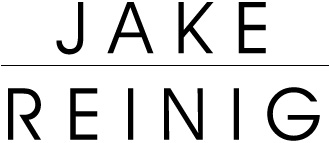

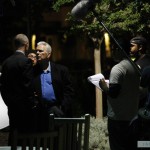
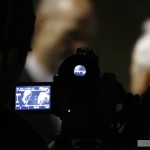
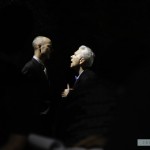
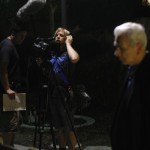
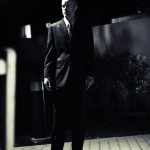
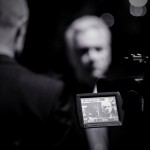
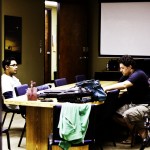
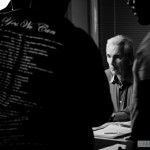
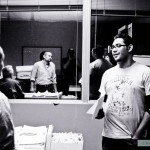
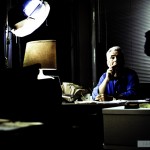
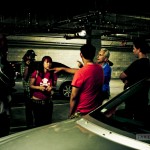
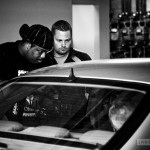
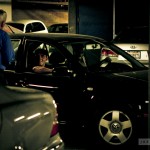
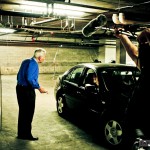
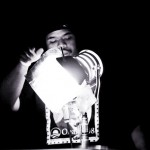
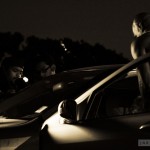
shit’s tight my friend. tight.